
Banishers: Ghosts of New Eden is familiar ground for Don’t Nod Entertainment. They’re better known for their narrative adventure games like Life is Strange or Tell Me Why, but they got their start with Remember Me, an action game and followed it up with Vampyr.
In fact, Banishers is meant to be a spiritual successor to Vampyr, blending occult themes, a deep narrative, and action gameplay all in a single package. But can Don’t Nod find the right balance to not undermine their own story? Find out in our Banishers: Ghosts of New Eden review!
Banishers: Ghosts of New Eden
Developer: DON’T NOD
Publisher: Focus Entertainment
Platforms: Windows PC (reviewed), PlayStation 5, Xbox Series X/S
Release Date: February 12, 2024
Price: $49.99
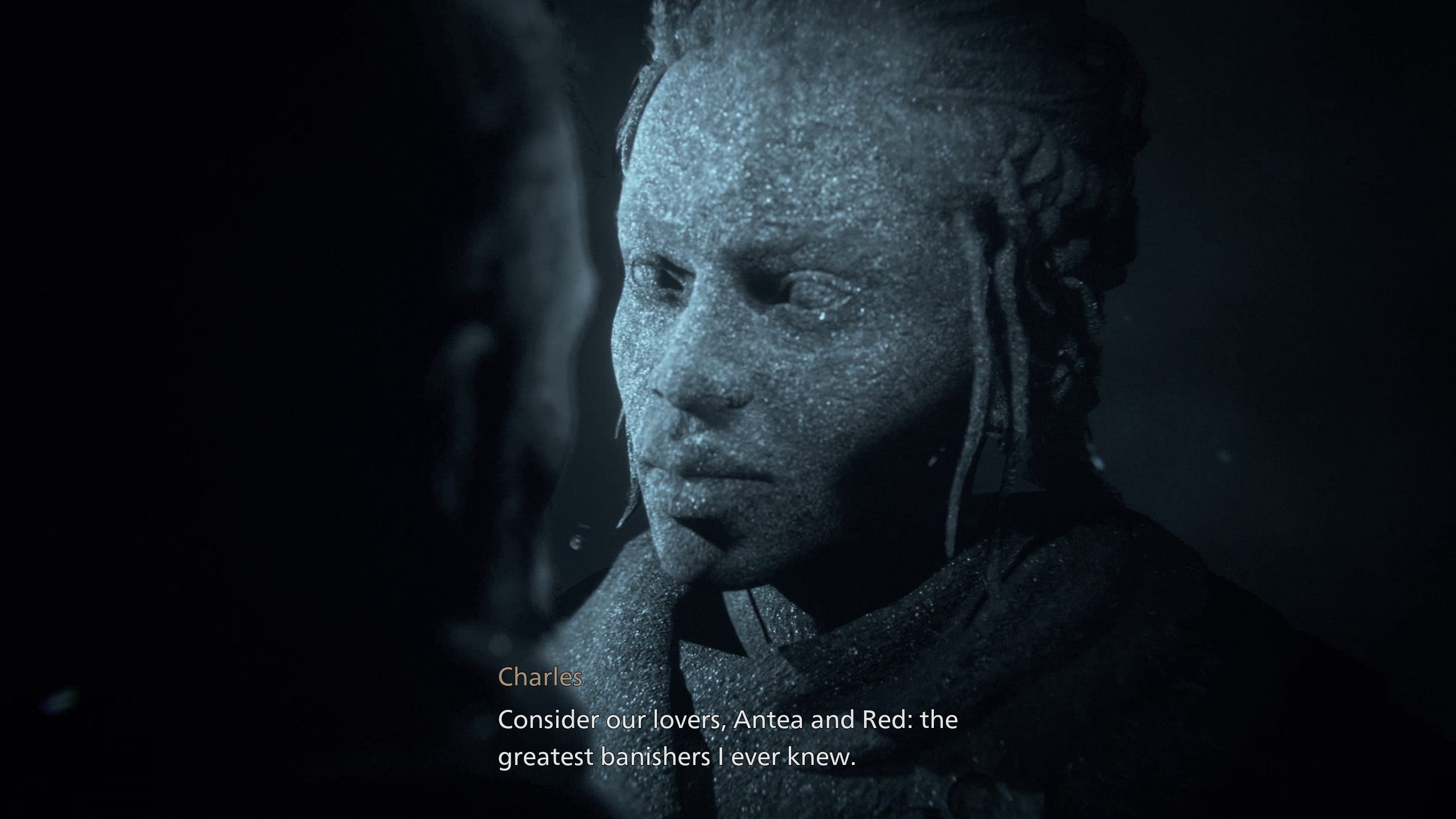
Players take on the role of Red mac Raith and Antea Duarte, a master-apprentice pair of Banishers and lovers. The game world is a fictionalized version of colonial New England, where occult magic is largely regarded as truth by superstitious townfolk. As such, Banishers are those called to perform rituals and investigations to either help ghosts pass on (Ascent), or to Banish them should they refuse to.
Antea and Red have been called by their friend, a holy man in the colony of New Eden. The town has been plagued by a powerful curse and they discover a Nightmare (a powerful spirit) dwells in the town church. When they arrive, they learn their friend has died and we’re introduced to the role of a Banisher, as well as Ghost Investigations which are a core mechanic of the game. On their first night in town, Red and Antea experience bad dreams and are lured to the church; but they are woefully unprepared.
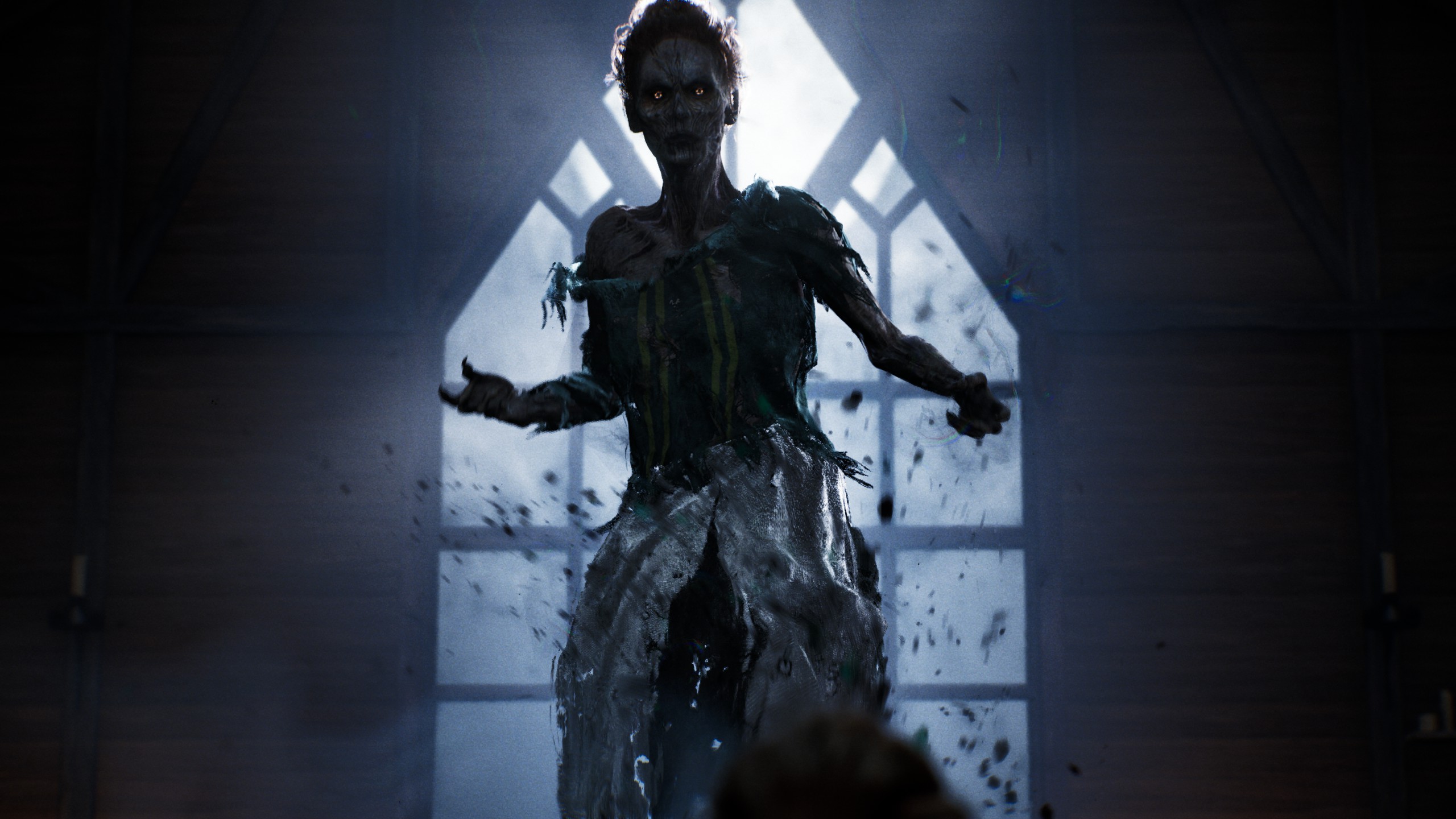
Antea dies in the tutorial, I’m going to rip that band-aid off right now. It’s not a spoiler because it’s literally a selling point of the game to swap between Ghost-Antea and Red to solve puzzles and fight.
Red is thrown into the ocean by the Nightmare and awakens later, saved by a witch named Seeker. By the time Red comes to, the town of New Eden has been abandoned, consumed by the Nightmare’s curse which has begun spreading across the region.
In order to recover Antea’s body, Red and Antea will journey closer to the town and meet the disparate refugees from New Eden. Along the way they’ll uncover smaller hauntings, as well as symptoms of New Eden’s curse which are tied to the sins of its people.
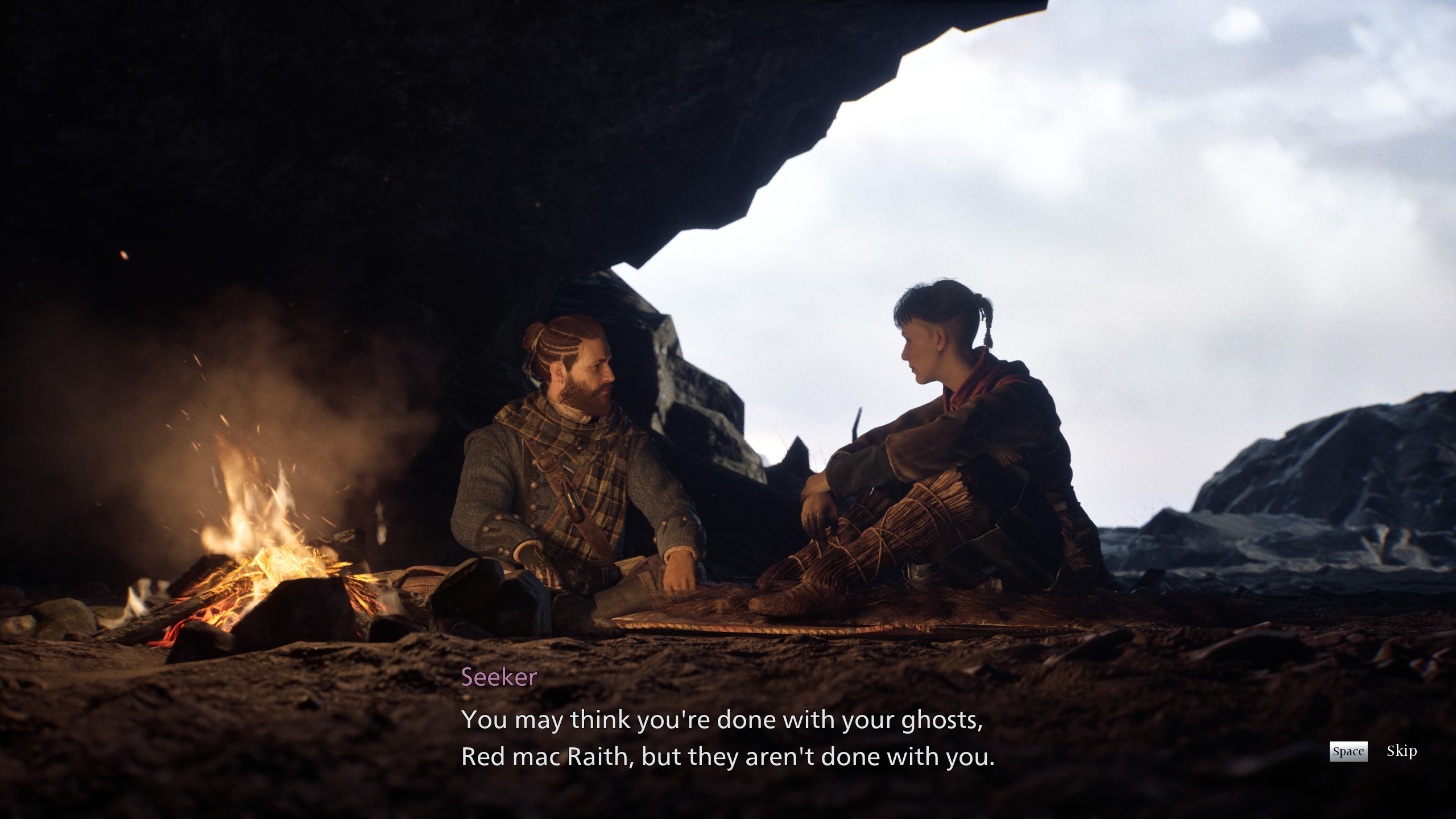
As such, players are presented with a moral dilemma. Ghosts leech the essence of the living and thus need to be banished or ascended. However Antea is privy to forbidden knowledge and tells Red that they can bring her back to life.
Antea isn’t selfish or nefarious in this suggestion, but she sees how much Red is hurting to know she’ll be gone once her ghost passes on. The player will make a vow to either Ascend Antea, or to resurrect her. However resurrection requires living essence to pull off, and to bring Antea back players will have to sacrifice living villagers with a Blame ritual.
These decisions are… actually pretty difficult sometimes. A lot of the living villagers have committed grave sins which left them haunted, but some are innocent. To resurrect Antea you’ll have to sacrifice most of them, whether they deserve it or not.
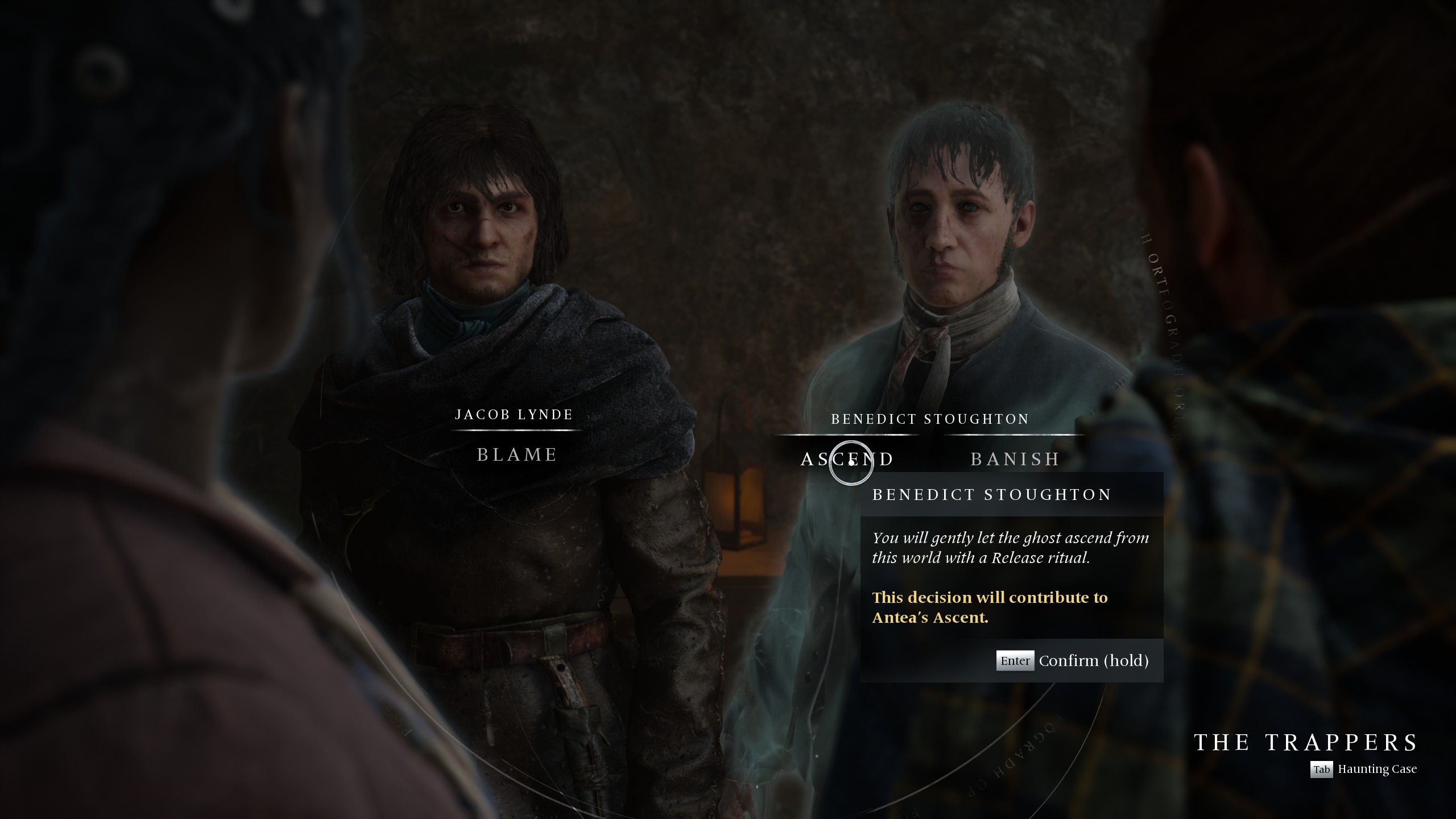
At the end of a Ghost Investigation, Red can either Ascend the spirit which allows it to pass on to a better afterlife, Banish the spirit which condemns it to “The Void” which is possibly Hell, or Blame the living individual who’s being haunted. The first two equally contribute to allowing Antea to Ascend at the end of the game, while the Blame ritual contributes to the resurrection ending. However, players should take their vows seriously.
Banishers: Ghosts of New Eden is a fantastic story, though there’s a huge BUT. There’s a lot of questionable gameplay mechanics and decisions. Since we just talked about Ghost Investigations we’ll start there. Having Banish and Ascent feels like a copout, it’s just there to allow players to enforce their own morals on the deceased by punishing them with Banishment. The real choice is between Blame and Ascent.
Even if you make a vow to Ascend Antea, you may find yourself tempted to Blame someone. Some of the living settlers you help with their hauntings are the worst, they’re murderers and betrayers. Meanwhile, some of them are innocent victims. In order to help Antea you’ll find yourself forgiving the guilty, or killing the innocent, depending on your vow; but you’re free to make your own decisions.
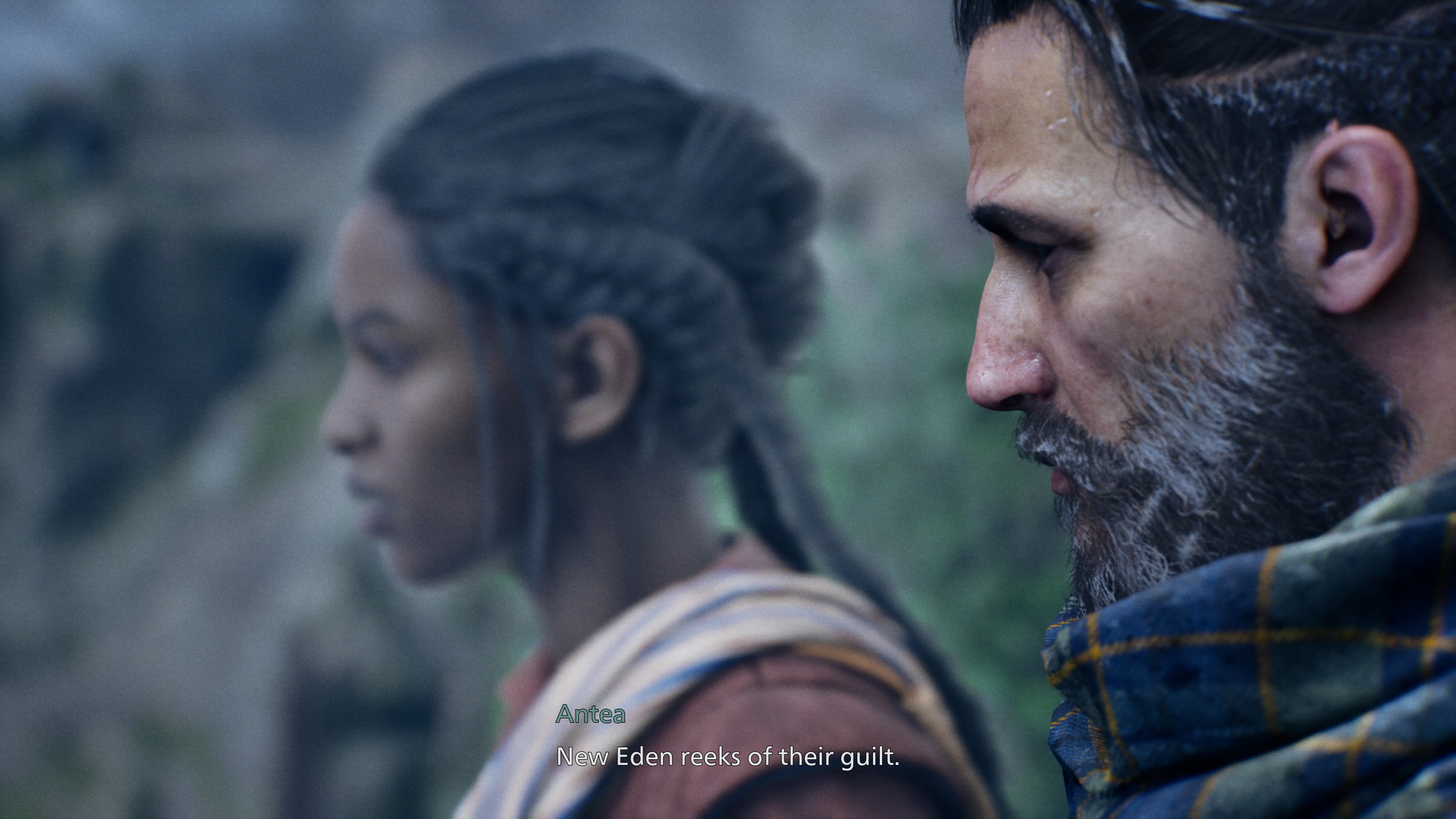
The gameplay is secondary to the story here, for some players that’s a game killer, but in this case I felt the story was compelling enough to keep me interested. The gameplay is fine but it’s more action RPG style fighting with some unique mechanics like parries, switching between Antea and Red mid-combo, and understanding enemy types. It’s not deep, but it shakes up the exploration. Boss fights are way more fun and above that is the puzzle-solving. It’s Zelda-style puzzles that reward exploration and establishing patterns.
Now for the huge “BUT”. There’s way too much clutter. There’s too many gameplay mechanics, there’s too many types of content, and there’s too much random crap.
Ghost Investigations and “dungeon” exploration are the core mechanics, these are fine. Then there’s extras like Void Breaches and Specter Nests, these are optional encounters that reward permanent stat buffs, these are fun little extras. We could have stopped there.
Why are there treasure maps in a game about occult mysteries? Once I stopped and realized how much side stuff there was to do, I started tuning it out. I’m a completionist at heart and I enjoy tracking down points of interest, doing a bit of puzzle solving, clearing optional encounters and quests, but I was burned out with treasure maps.
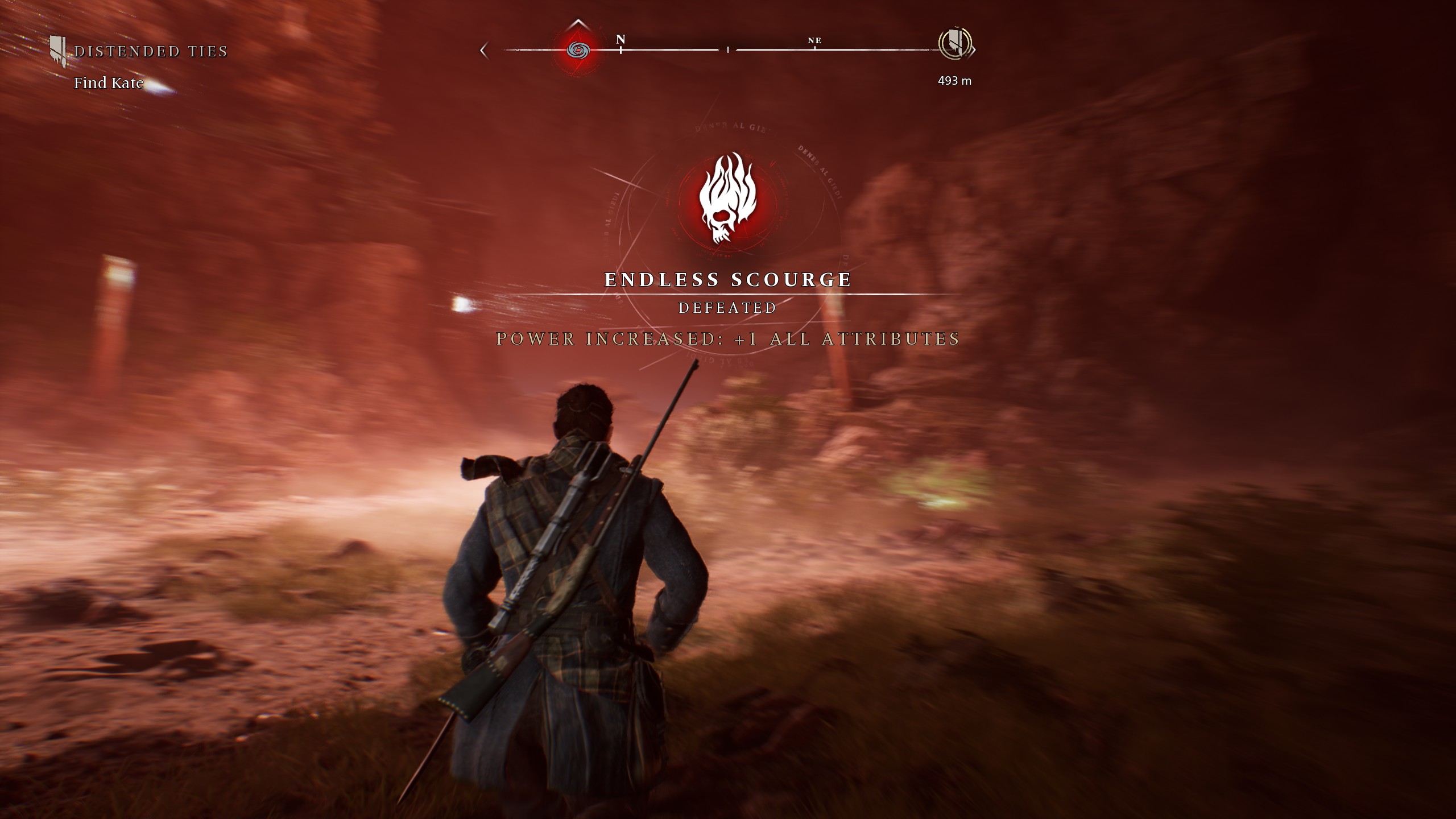
There’s also way too many secret caches of treasure. When playing as Red, your Banisher ring will glow blue to indicate there’s something hidden in the spectral world you can interact with through Antea. These are exciting at first because Antea can use ghostly powers to leap gaps, break open pathways, and more.
But no, a vast majority of the time you find a ghostly corpse sitting in the corner and you loot his body for like, 3 leather 30 silver, which is nothing. There’s also weird barrels and corpses that are just strung up? But they can be shot down by Red with the rifle, that’s another weird thing that really just isn’t necessary.
Now the most egregious game mechanic (speaking of leather) is the crafting system. Certain rituals require a token amount of resources to perform, and gear needs items to be upgraded. This is pointless. At no point did I feel the game was enhanced by this. Rituals require so few resources it’s negligible, meanwhile equipment upgrades are gated by rare tokens from Void Breaches and other optional encounters anyways.
Nope, you need 24 wintermint in addition to your beating void heart in order to upgrade your weapon. They could have cut out the material gathering outside of the tokens, instead it just feels like a cynical appeal to the lowest common denominator of player to keep them occupied with something shiny when traveling; that little dopamine hit of slamming E to pick up some shiny grass on the side of the road between quest objectives.
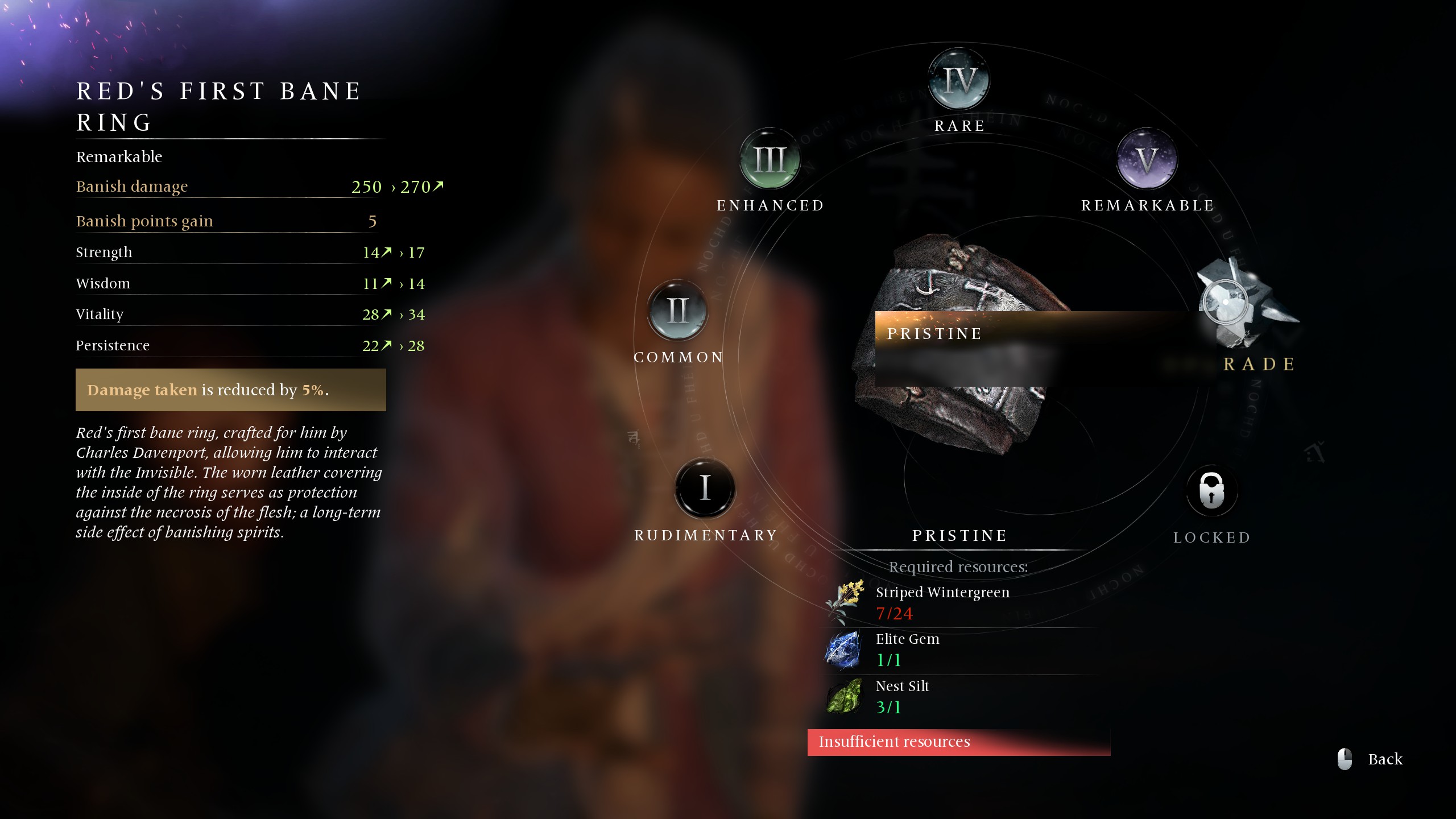
That’s my biggest complaint with Banishers: Ghosts of New Eden, it’s a fantastic narrative adventure with half-decent combat, but it completely weighs itself down with trying to cynically emulate the AAA formula.
In my opinion you could cut out: treasure maps, crafting, endless void Breaches/Nests/Elites (leave normal ones), random caches with silver/crafting materials… and the game would be better for it.
There’s plenty of exploration and puzzle solving even without them! This might have been a long rant, but at the end of the day it’s only one core issue: the game feels formulated to lean on “AAA” style mechanics, like every other open world 3rd person action-RPG released in the past 10 years. However to the game’s credit, it’s the most fun I’ve had playing a “AAA” style game.
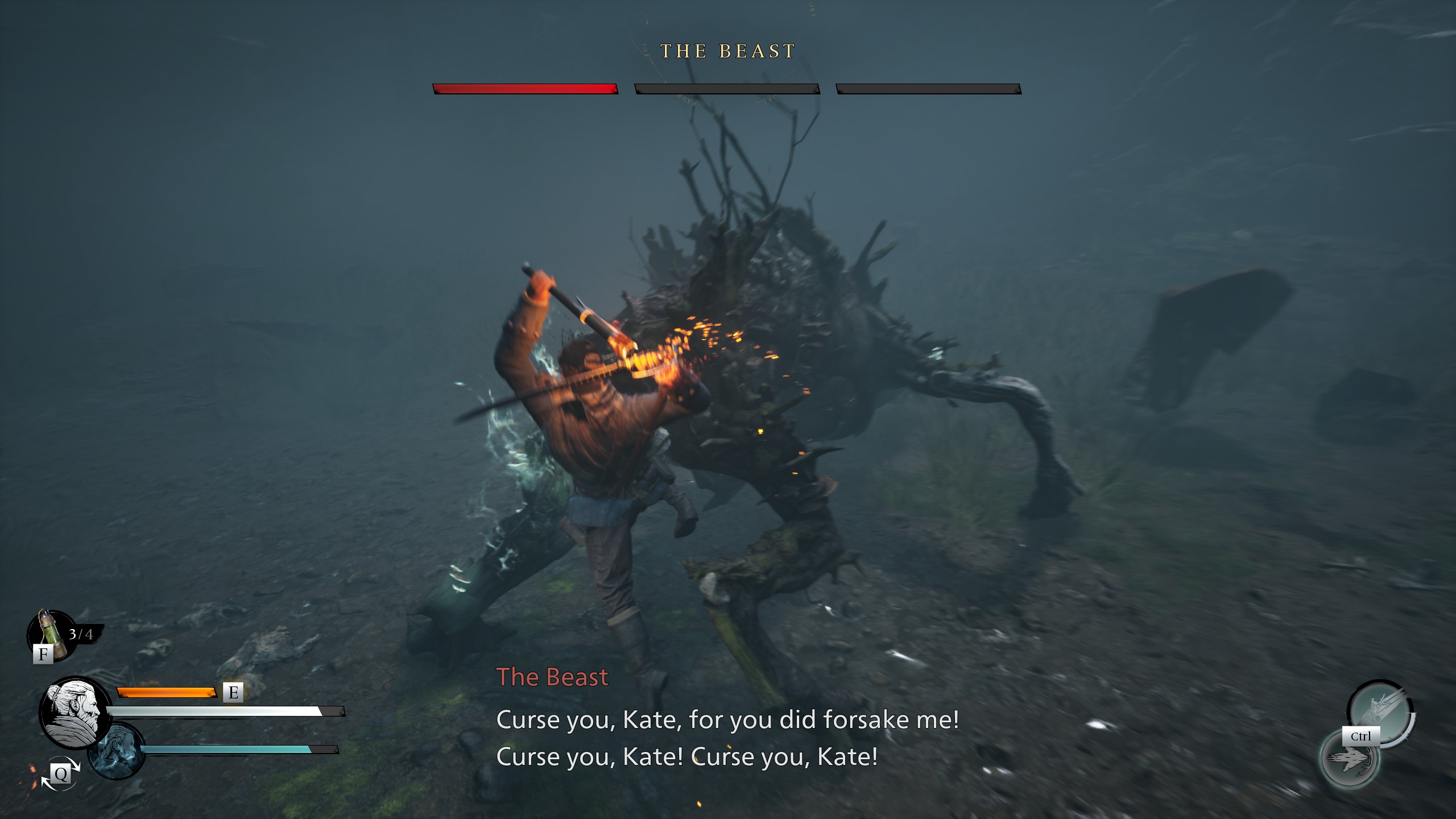
There’s a lot of good to say about Banishers, it’s fully voiced, which is a feat in its own right. Russ Bain as Red and Amaka Okafor as Antea do a fantastic job, but I’m tempted to give shoutouts to the entire voice cast, I never heard a voice that didn’t match a character and they were wonderfully acted. I was easily immersed and invested in the characters and story with no small thanks to the voice work.
Of course, voice work isn’t as much without good writing behind it. I liked the stories and side plots going on around in Banishers and I did feel some actually difficult choices when it comes to punishing the living. The side stories are intriguing and worth investigating, completing all the haunting cases is definitely worth doing as far as “optional” content goes.
Graphically, the game suffers from “Yellow Paint Disease“, but now I understand why it’s a thing. The environments are so nice that some ways to progress aren’t immediately obvious, or maybe I’m getting old and stupid. Characters are animated well, with vivid and detailed expressions and the environments are fun to look at and explore.
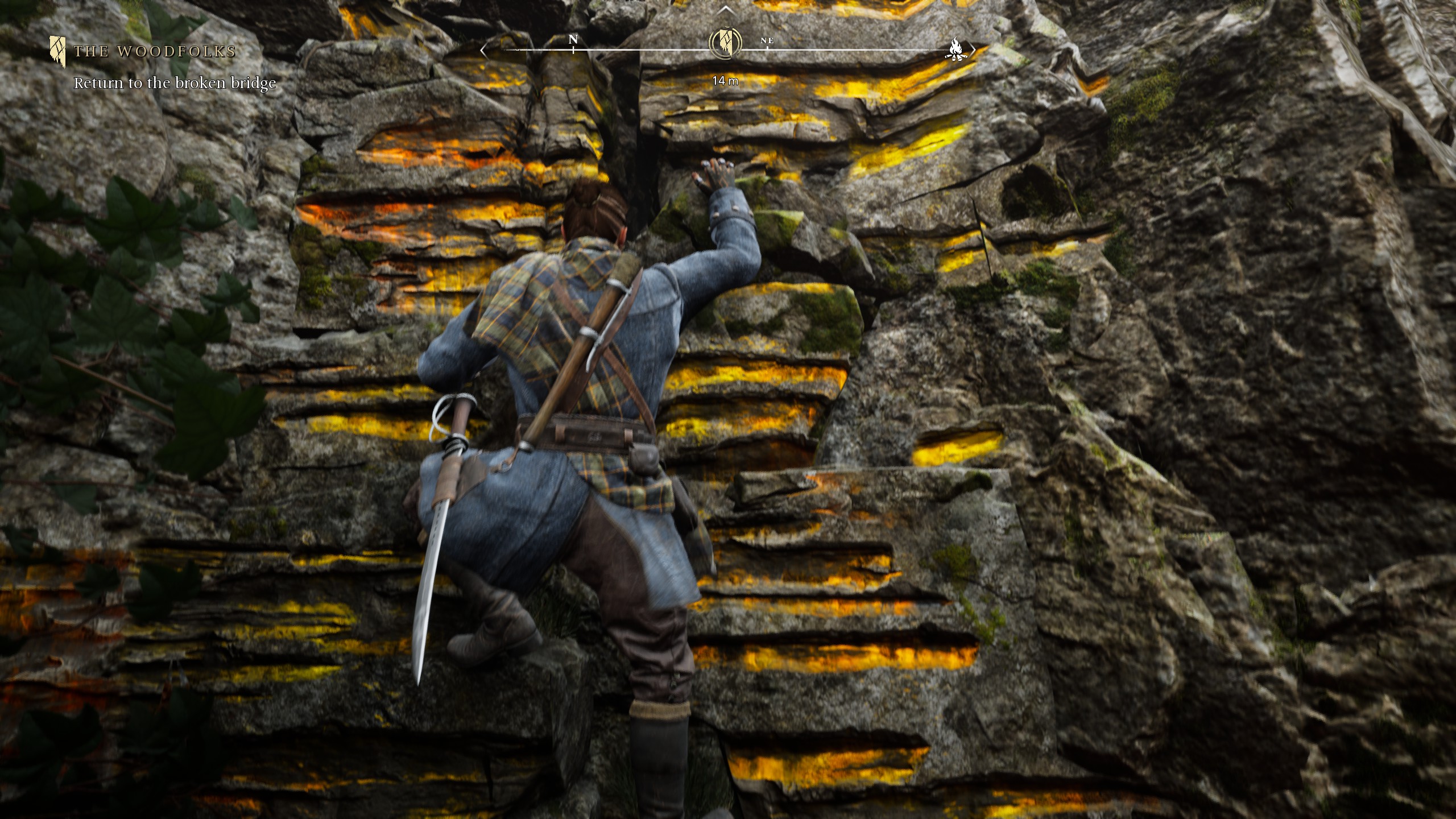
Ultimately, Banishers: Ghosts of New Eden is very fun to playthrough and complete, to see the stories play out, to learn the secrets of the settlers of New Eden, and maybe do some of the extra fluff that doesn’t really need to be in the game (if the mood strikes you).
If you’re already a fan of “AAA” style action RPGs you’re likely to enjoy Banishers: Ghosts of New Eden even more than I did.
Banishers: Ghosts of New Eden was reviewed on Windows PC (via Steam) with a copy provided by Focus Entertainment. You can find additional information about Niche Gamer’s review/ethics policy here.